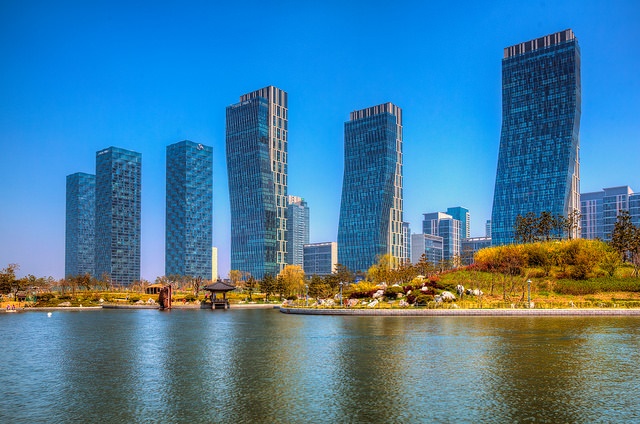The Peninsula
Quiet Cooperation: Subtle Ways the UN Engages North Korea

By Mark Tokola
One thing everyone knows about North Korea is that it is isolated. Visits to the DPRK are controlled and monitored. Few North Koreans are allowed to travel abroad and then only for specific purposes. Because it is heavily sanctioned by the international community, international trade and investment is minimal. North Koreans are not allowed access to international media; and international journalists have little ability to report from North Korea. It is one of the few places in the world without general internet access. Secretary of State Hilary Clinton summed up the story of North Korea’s isolation when she resurrected the 19th century term, then used for all of Korea, to describe today’s North Korea — the “Hermit Kingdom.” And yet, North Korea’s isolation is not total.
One venue for international cooperation with the DPRK is through a United Nations regional agency headquartered in South Korea in the ultra-high-tech, Songdo International Business District, 40 miles southwest of Seoul. Following the UN’s penchant for accurate but difficult-to-remember agency titles, it is the “United Nations Economic and Social Commission for Asia and the Pacific: Subregional Office for East and North-East Asia,” or ESCAP-ENEA. ESCAP covers all of Asia and Pacific; the subregional ENEA office is responsible for China, Russia, Japan, Mongolia, North Korea, and South Korea.
Like many international agencies, ESCAP-ENEA’s work is technical and non-flashy, but useful. Representatives from all six countries meet under its auspices to deal with issues such as: interregional trade facilitation, transportation networks, development cooperation, statistical methodology, and social protection policies.
Environmental cooperation among the same six countries falls under a separate UN body, the “North-East Asian Subregional Program for Environment Cooperation” (NEASPEC), for which ESCAP-ENEA provides the secretariat. That organization’s work program includes protection of endangered species and migratory birds, desertification, marine protected areas, and reduction of carbon emissions. On the latter, it is striking that although South Korea’s GDP is $1.79 trillion, compared to the DPRK’s estimated $40 billion, the two countries’ sulfur dioxide emissions are about the same: 951 thousand metric tons per year for the ROK versus 866 for the DPRK. One of the benefits of the ESCAP-ENEA/NEASPEC system is that it allows for such comparative statistics to be gathered.
North Korea is a member of ESCAP-ENEA and NEASPEC, but predictably is not as full a participant as the other five countries. Minutes of their meetings show, for example, that DPRK representatives will participate in the meetings that are held in Russia and in China, but not those held in South Korea, Japan, or Mongolia. Nevertheless, when they do attend meetings, they participate. At an ESCAP meeting held in Changchun, China in 2012 on “Building Sustainable Ageing Societies” (an ESCAP focus), Ri Chol Hui, Vice-Chairwoman of the DPRK’s “Central Committee of the Korean Federation for Care of the Aged” gave a PowerPoint presentation describing government policy towards elder care, noting that 61.2% of the elder population are cared for by their children. North Korea has permitted international teams sponsored by NEASPEC to survey migratory bird populations in Rason in the country’s northeast. North Korea has also provided statistics to ESCAP’s “Asian Highway Network” project, noting with apparent honesty that 220 kilometers of the 320 kilometer-long Pyongyang to Sinuiju highway falls within the category of “bad surface condition.”
Recognizing North Korea’s singularity within the six-nation group, ESCAP has a special project for “Promoting Regional and Economic Cooperation in North East Asia with particular focus on Democratic People’s Republic of Korea (DPRK).” Under this rubric, ESCAP has provided training to DPRK officials in areas such as road safety and traffic management, and on the transition of electric railways from direct current to alternating current. The former program was held in Thailand in March 2014, the latter in Moscow in November 2014. The South Korean government provides part of the funding to ESCAP to provide technical training for DPRK officials.
Why does this matter? Partly because it gives a more nuanced view of the DPRK’s international interactions. It shows that there are venues in which North Korean and South Korean officials already meet to discuss practical cooperation. ESCAP-ENEA/NEASPEC provides an established means to discuss North-South issues such as biodiversity within the DMZ without having to invent a venue. It provides a channel for the ROK to fund selected training programs for DPRK officials
What UN regional cooperation does not mean is that the U.S. is shut out of the regional conversation, or that the UN agencies are giving the DPRK a “pass” on its misdeeds. U.S. representatives often participate in ESCAP-ENEA forums and technical meetings. The 2014 Korean Armistice Anniversary Message delivered by the ESCAP Executive Secretary, Dr. Noeleen Heyzer, included the following: “The international community is firm and united in not accepting the DPRK as a nuclear-weapons state. There is strong international consensus on the need for verifiable denuclearization of the Korean Peninsula.” Tough sanctions and practical cooperation have found a way to coexist within the UN system.
Mark Tokola is the Vice President of the Korea Economic Institute of America. The views expressed here are his own.
Photo from Baron Reznik’s photostream on flickr Creative Commons.
